Explore the flavorful heritage of Eastern Europe with the timeless Classic Borscht. This vibrant beet soup, renowned for its color and comforting taste holds a special place, in the kitchens of numerous Slavic families. Bursting with an array of vegetables and often topped with a dollop of cream it serves as an nourishing meal to warm your heart on chilly days or when you crave some soul soothing nourishment.
Ingredients

- 3 medium beets, peeled and grated
- 1 medium onion, finely chopped
- 1 carrot, grated
- 1 potato, diced
- 2 tbsp tomato paste
- 4 cups vegetable or beef broth
- 2 garlic cloves, minced
- 2 tbsp vinegar
- 1 tsp sugar
- 2 tbsp vegetable oil
- Salt and pepper to taste
- Fresh dill and sour cream for garnish
Instructions
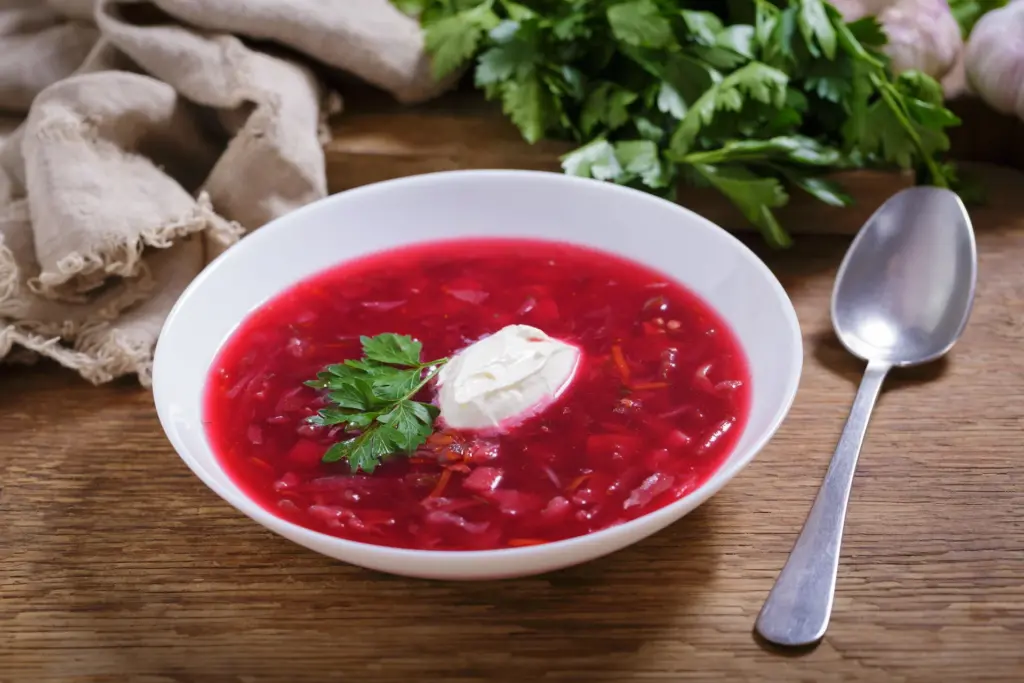
- In a pot heat up the oil, on medium heat. Put in the onions, carrots and beets. Cook until the veggies become soft.
- Mix in the tomato paste. Then add the potatoes.
- Pour, in the broth making sure that all the vegetables are covered.
- Include vinegar, sugar, garlic, salt and pepper. Stir everything together.
- Let the mixture come to a boil and then lower the heat to simmer for around 30 minutes or until the vegetables become tender.
- Enjoy your Classic Borscht while its hot! Sprinkle some dill on top. Put a dollop of sour cream.
The Rich History of Borscht
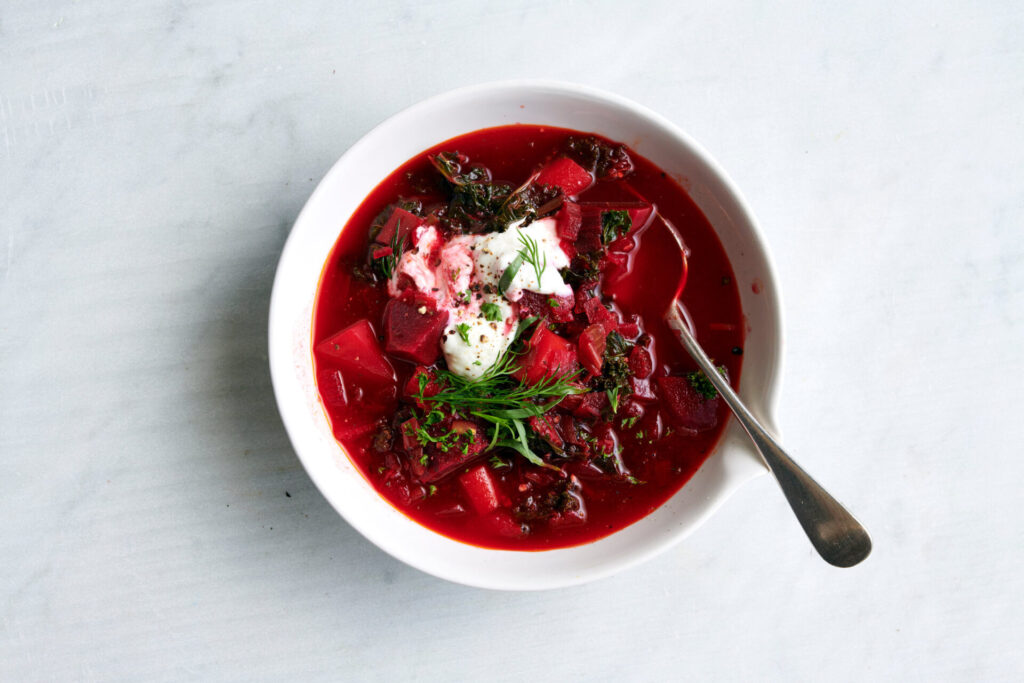
The Classic Borscht has deep roots in Eastern European culture, particularly in countries like Ukraine, Russia, and Poland. Each region puts its spin on this soup but the core essence remains unchanged; a robust broth made with beets and filled with an abundance of vegetables.
What is Traditionally Eaten with Borscht?
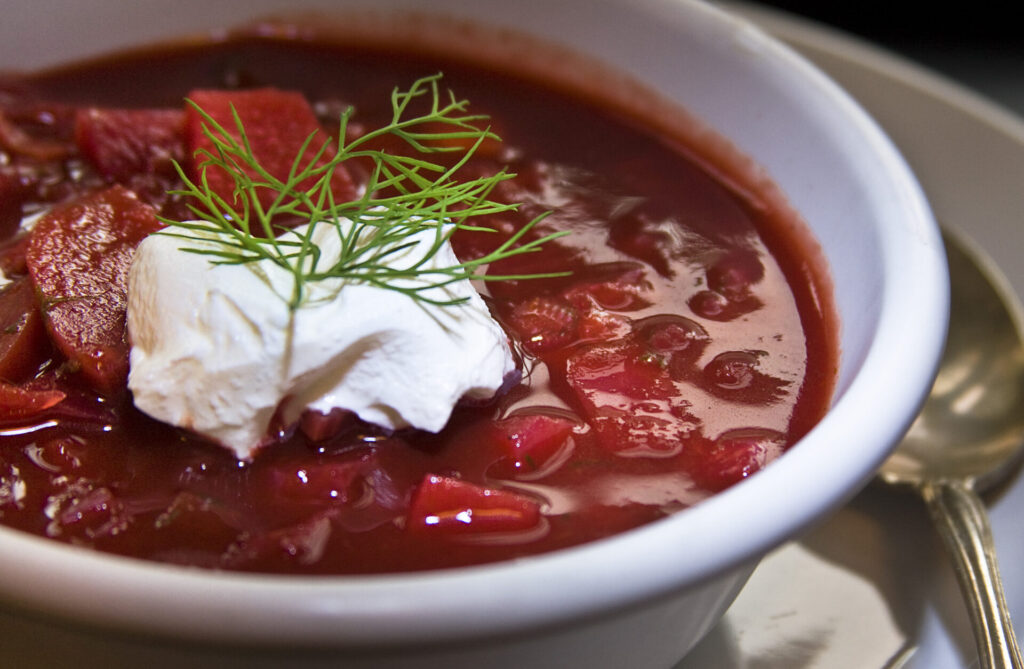
The Classic Borscht is often a meal in itself, but traditionally, it’s accompanied by sides that complement its rich flavors. A thick piece of rye bread or pampushky ( garlic bread) is typically served alongside ideal, for savoring the flavorful broth. Furthermore you can relish vegetables, boiled eggs and cured meats together to elevate your dining experience.
What do Russians Eat with Borscht?
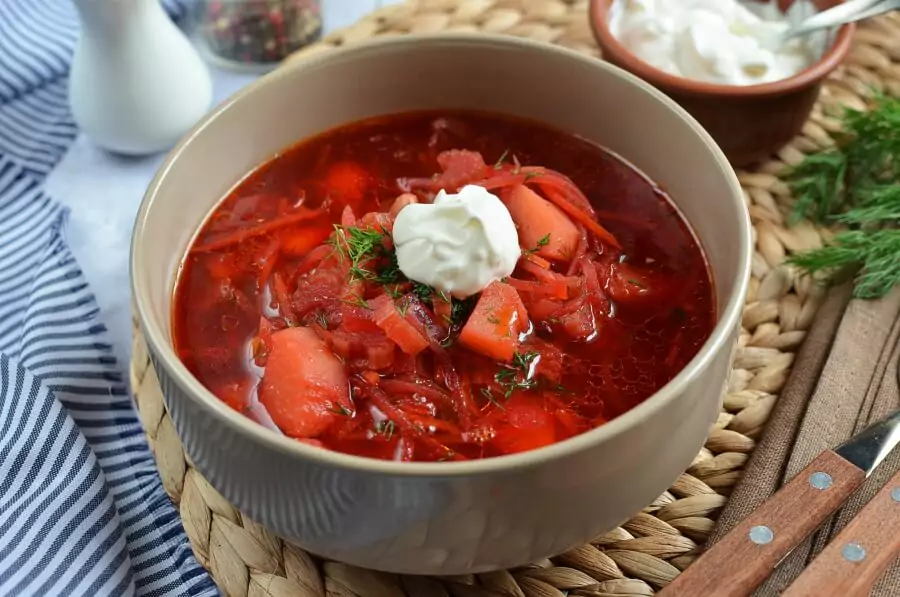
In Russia, Classic Borscht is typically served with smetana, a type of sour cream, which adds a creamy texture and tangy flavor to the soup. It is quite common to accompany borscht, with “salo” (preserved pork fat) and cloves of garlic. This creates a contrast to the soups tanginess. Additionally a serving of rye bread often spread with butter is the complement, to the authentic Russian borscht experience.
The Nutritional Benefits of Borscht

The Classic Borscht is not just delicious. It also offers a range of benefits. Beets are renowned for their properties and their ability to promote heart health. Additionally the other vegetables included in the dish provide vitamins and minerals that contribute to its goodness.
Classic Borscht: A Heartwarming Eastern European Delight
Description
Experience the heartwarming flavors of Eastern Europe with our Classic Borscht. A vibrant beet soup packed with vegetables and tradition.
Ingredients
Instructions
- In a pot heat up the oil, on medium heat. Put in the onions, carrots and beets. Cook until the veggies become soft.
- Mix in the tomato paste. Then add the potatoes.
- Pour, in the broth making sure that all the vegetables are covered.
- Include vinegar, sugar, garlic, salt and pepper. Stir everything together.
- Let the mixture come to a boil and then lower the heat to simmer for around 30 minutes or until the vegetables become tender.
- Enjoy your Classic Borscht while its hot! Sprinkle some dill on top. Put a dollop of sour cream.
Video
Notes
- For an option you might want to think about including chunks of beef or pork. In case you prefer it fresh lemon juice can be used of vinegar.
Serving and Storing Tips
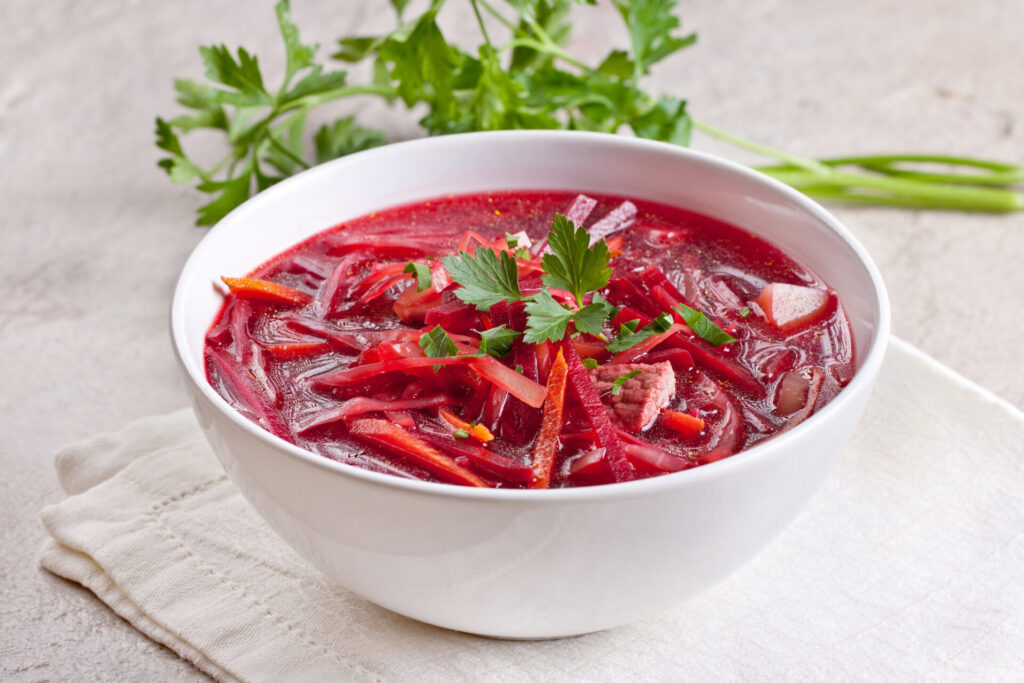
The beauty of Classic Borscht is that it often tastes even better the next day, as the flavors meld and intensify. It’s ideal, for preparing of time and warming up later. If you need to store it make sure to place it in a container, in the fridge.. When you serve it be sure to offer cream on the side for that delicious creamy contrast.
Final Thought
The Classic Borscht is more than just a soup; it’s a journey through Eastern European culinary traditions. Whether you have knowledge of its flavors or are embarking on your tasting journey you can expect a delightful and cozy experience.

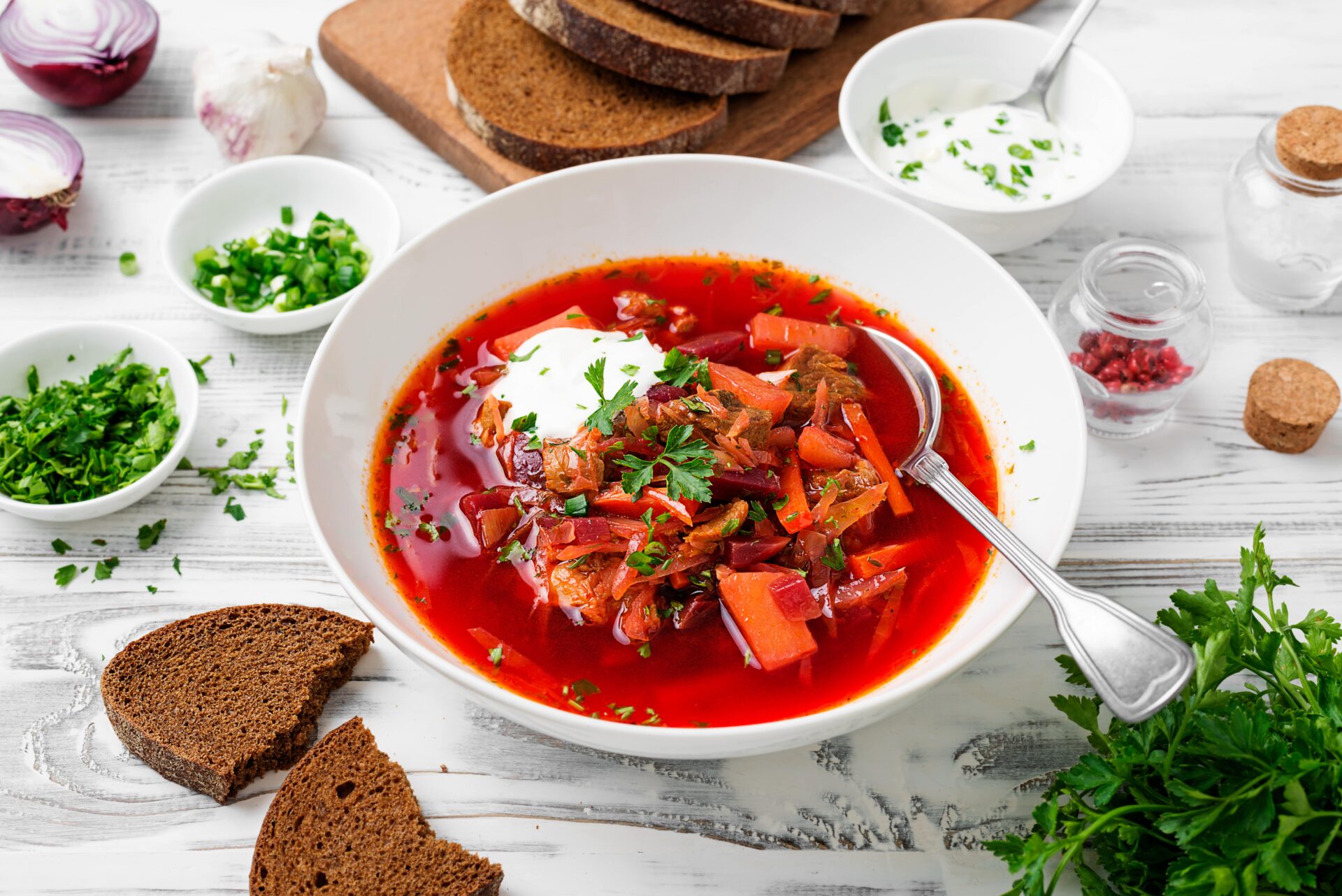








Leave a Reply